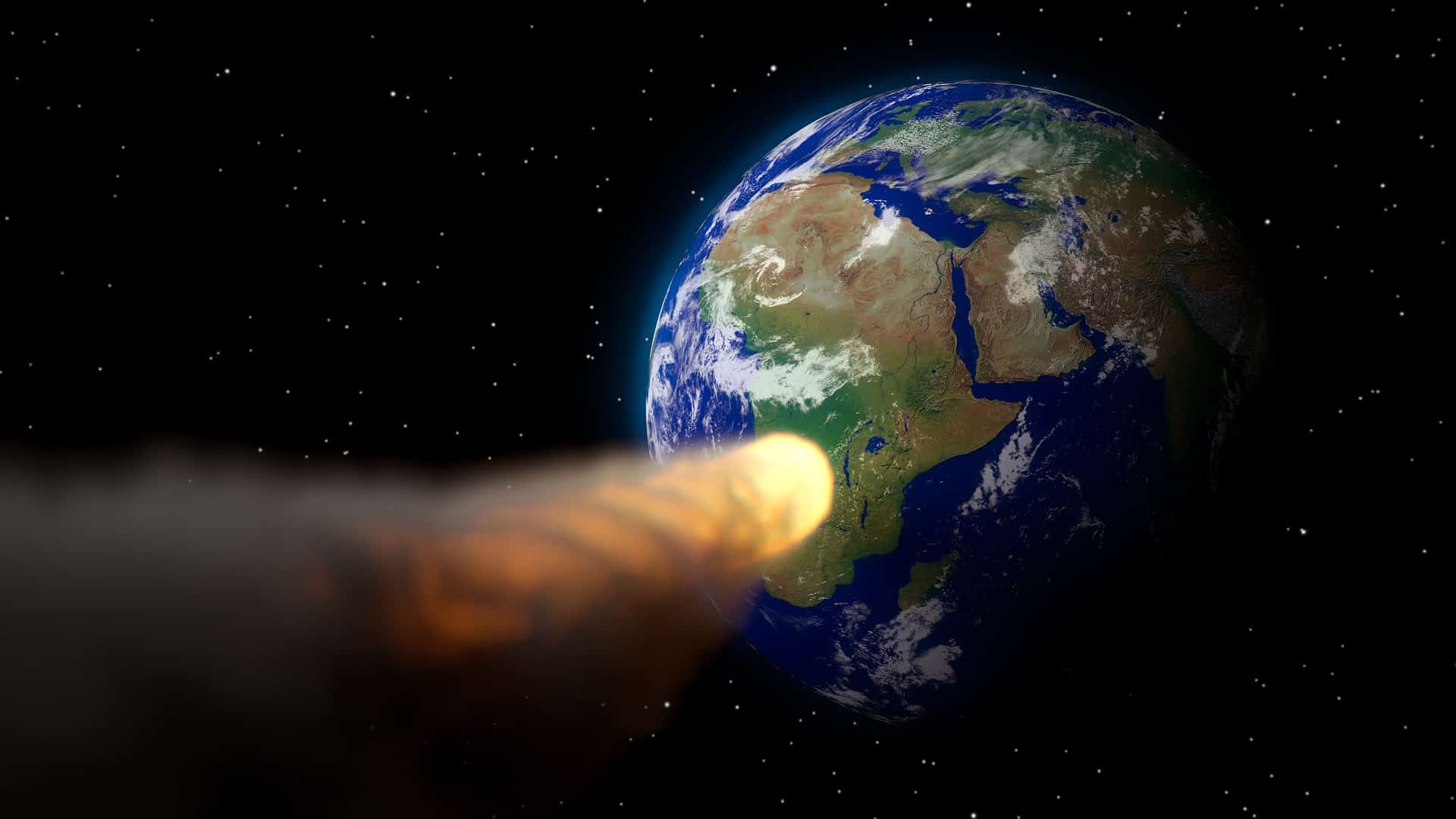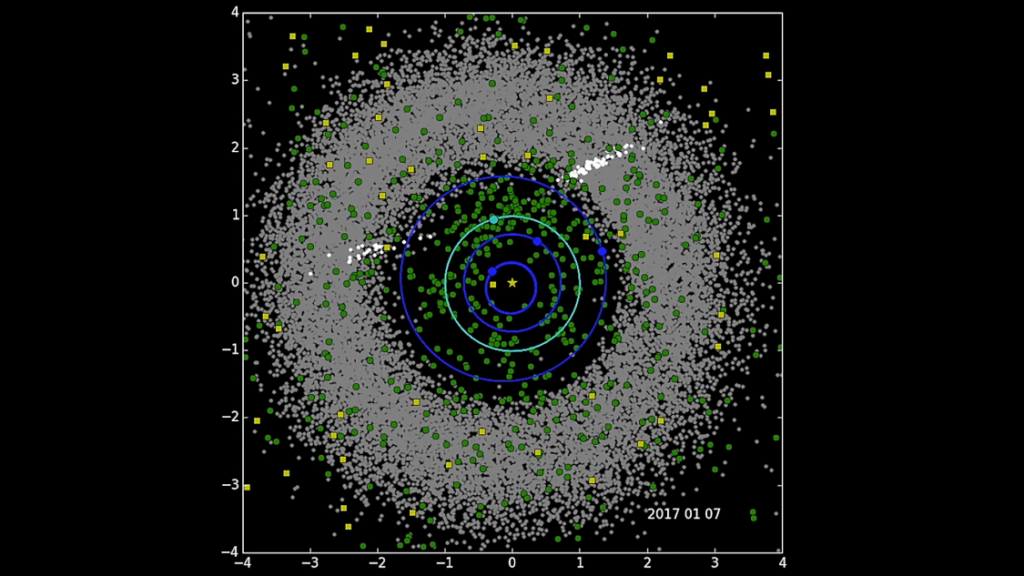
Over 66 million years ago, the Earth experienced the devastating impact of a colossal 0.6-mile-wide (10 km) asteroid, which didn’t do much good for the dinosaurs. The cataclysm unleashed a rain of molten debris, wiping out much of the planet’s land-based life and plunging it into a prolonged winter, cloaked in dust and soot.
Now, a recent study led by Oscar Fuentes-Muñoz from the University of Colorado, Boulder, might bring a sense of relief to humanity. The research, accepted for publication in The Astronomical Journal, suggests the likelihood of an explosive asteroid impact on Earth within the next 1,000 years is remarkably low, if somewhat nonexistent.
NASA estimates civilization-ending asteroid impacts involving objects larger than one kilometer in size only transpire once every few million years. Until now, however, definitive reassurances regarding the near future had remained elusive.
The NASA asteroid catalog, which meticulously documents near-Earth objects surpassing one kilometer in size, is now considered 95% complete, disclosing nearly a thousand celestial entities. By meticulously tracking the trajectories of these asteroids and accounting for influential factors like Jupiter’s gravitational pull, astronomers can predict their paths up to a century into the future.
This new study puts a new tool into astronomers’ belts for these searches.
“We came up with a less computationally intense approach to take a peek at a longer time interval,” says Davide Farnocchia from NASA’s Center for Near Earth Object Studies at the Jet Propulsion Laboratory, a co-author on the study.
By identifying “the fraction of the orbit that can bring the object close to Earth,” the team could model impact risks much farther out than possible with other methods.

Among the asteroids meticulously examined by the researchers, one celestial wanderer named 1994 PC1 emerged as the object with the highest impact risk. Measuring approximately one kilometer in width, this stony asteroid possessed an infinitesimally minute 0.00151% chance of passing within the moon’s orbit over the next 1,000 years. Although the collision probability remains negligible, Fuentes-Muñoz eagerly anticipates the scientific prospects that such a close encounter would offer.
The study was partly motivated by a 1998 request from the United States Congress, urging NASA to catalog 90% of near-Earth asteroids larger than one kilometer in size.
Farnocchia emphasizes that while the probability of significant asteroid impacts on Earth is incredibly low, the scientific community remains vigilant, fulfilling its duty to monitor potential threats.
Smaller asteroids, more abundant in numbers, shouldn’t be ignored though. The Chelyabinsk incident in 2013 serves as a stark reminder, as the mere 65-foot (20-meter)-wide meteor explosion caused injuries to over a thousand people and shattered numerous windows. Despite their size, these smaller celestial interlopers can inflict considerable damage.
Efforts are underway to track these smaller asteroids. Fuentes-Muñoz reveals that NASA’s catalog is currently 40% complete for asteroids larger than 460 feet (140 meters), which have the potential to devastate entire cities. However, the precise quantity of these asteroids remains uncertain, fostering hope that upcoming sky surveys, like the comprehensive exploration by the Vera Rubin Observatory in Chile, will significantly enhance our understanding.
For now though, those fearing our fate may go the same way as the dinosaurs can rest easy for the foreseeable future.


